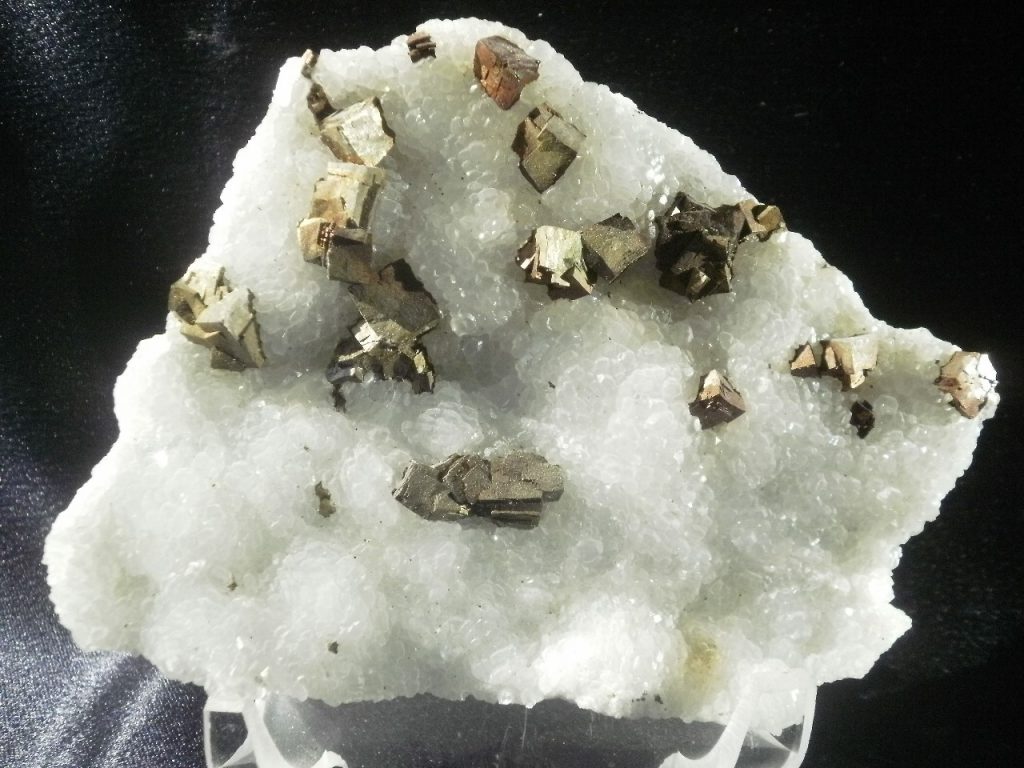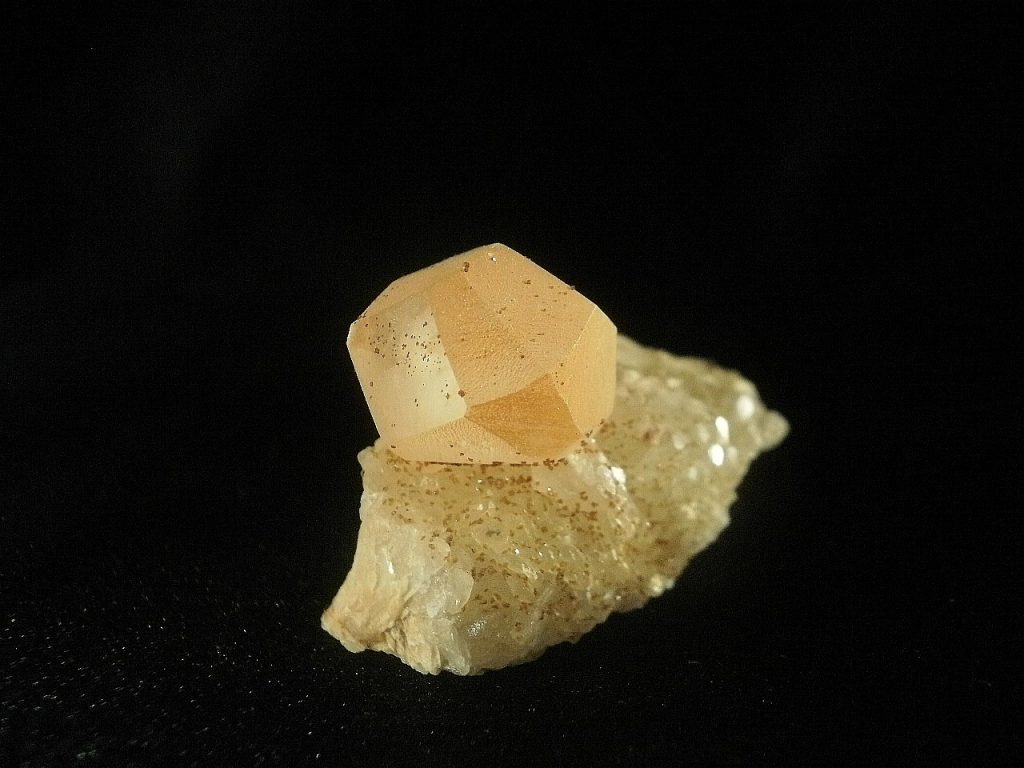By Eric von Werstak
Feature image: F-6 Freeway at Mount Brown looking north where the vughs appeared.
Introduction
Mount Brown is situated near Dapto in the Illawarra District of the South Coast of New South Wales. It comprises of sandstones of volcanic derivation and lavas of the Berkeley Volcanics. The rocks crop out in the area between Figtree and Albion Park and consist, along that area, of latite or trachyandesite flows. The attain a maximum thickness of 24 metres and resemble basalt in general appearance. The lavas contain copious well-formed phenocrysts of feldspar up to 2cm long.

A completed extension in 1988 to the F6 Freeway at Mount Brown revealed an interesting, hitherto unrecorded occurrence of deuteric minerals within the volcanic rocks in one of the major road cuttings.
Mineral Setting
Five sizeable elongated vughs were exposed in the cutting all aligned in a NE-SW direction. The rock immediately enclosing the vughs had been strongly altered by deuteric waters producing much zeolitic material including laumontite which is locally spread through the rock.

Several of the vughs became water-filled during wet weather and, in some cases, water poured out of the vughs when penetrated causing serious engineering problems. As waters passed through the cavernous rock, calcite was initially deposited and pyrite was oxidised causing iron staining and eventually resulting in the corrosion of many of the crystals.
Constituent Minerals
Laumontite: This zeolite, already well known from the old quarries of Unanderra, formed a thick lining to the vughs and most of the mount or hill is made up of this; it ranges from white to grey in colour. When first exposed it was quite coherent but after two weeks began to break down. In the finishing touches to the freeway the side walls had to be seized in concrete to stop minor gravel falls onto the road.
Calcite: One of the main features of the Mt Brown mineralogy is the wide range of crystal habits present. This includes the following:
- Sharp razor-like blades resembling corn flakes and cockscomb. Colour ranges from white, yellow to dark brown occasionally with an iron-stained sheen with teal blue iridescence. The black was due to microscopic crystals of Siderite covering the crystal faces.
- Nail head crystals, dark brown in colour surrounded by large tabloidal orange crystals.
- Rhomboids were present but were small up to 15mm yellow in colour which stood out in the presence of amethyst.


The range of calcite growth, ranging from large blades down to drusy, was amazing within a small area dug out. The middle vughs opened up into metre long cavities where hyrdrothermal activity was prevalent producing fingers of calcite up to 40 cm long where on side produced pure white crystals and the other side, orange from iron staining.

In another vugh, some of the calcite had shapes resembling kernels of walnuts up to 5cm across fluorescing bright pink under a long wave ultraviolet lamp.

Pyrite: Pyrite was found in all vughs in greater or lesser amounts ranging from minute crystals, often growing in calcite, to patches 50cm across. The pyrite crystals were sometimes strikingly iridescent with cubes, octahedral and cubo-octahedra clearly recognisable.

The most remarkable occurrence of pyrite were the ‘needles’ ranging in colour from gold, red, to iridescent blue depending on the degrees of surface tarnish or oxidation. In one of the vughs, pyrite needles were seen spearing through calcite crystals (actually the calcite had grown around early formed needles).

Such needles were occasionally sceptred with a cube or octahedron of pyrites. The longest pyrite needle was 6cm in length and was so delicately attached at the base that it would sway from its upright position from the slightest breeze.

Pyrite also occurred as ‘spray-like’ aggregates, long rectangular blades (compressed cubes) and as dustings of small crystals on calcite.
Quartz: Crystals of quartz occurred in three of the vughs ranging from tiny druses up to single crystals of 1cm. One vugh had small clear hexagonal wheel-like crystals. Another yielded two small pockets of amethyst, the first pocket was of clear to deep purple crystals associated with yellowish rhombs of calcite. The second had pale yellowish quartz enclosing tiny pyrite cubes.

Aragonite: In one vugh, crystals up to 2cm long were found lying prone on calcite crystals but could not be removed without damage. Individual hexagonal rhombs were found covered in microcrystals of dolomite.

Only one pocket contained a helictite of aragonite resulting from the active from dripping water readily present.
Conclusion
Regretfully, this locality is now sealed off – most of the vughs have been cement filled to prevent caving in onto the Freeway. Collecting is not permitted and would be dangerous anyway. When travelling north through Mt Brown, remnants of the first vugh can still be seen on the eastern cut.
In regard to the pyrite needles it is interesting to note that Dana’s Textbook of Mineralogy Vol1 p283 mentions acicular pyrite i.e. elongated along the [001] direction, in the same manner as wire gold.



